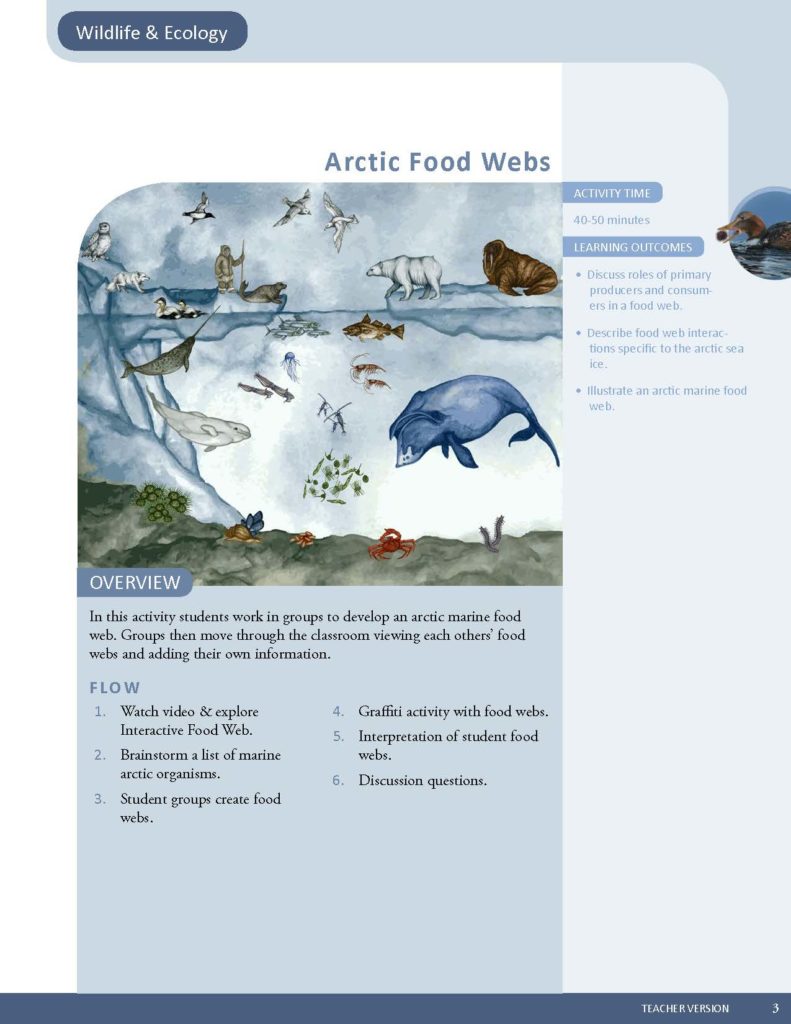Watch this short lesson to learn about the different roles of species in an Arctic marine ecosystem, and to explore an Arctic food web! This lesson includes video footage of Arctic marine species and an interactive food web you can access from home!
Mini-lesson Required Materials
- Paper
- Pencil/Pen
Lesson Plan Preview
Links:
SIKU: The Indigenous Knowledge Social Network
Vocabulary:
- Decomposers: Organisms that break down and recycle waste and dead organisms.
- Ecosystem: A community of organisms that interact with each other and their environment.
- Food web: A diagram that depicts energy transfer between organisms in an area.
- Herbivore: An organism that only eats plants.
- Pelagic: Relating to the open ocean.
- Photosynthesis: The process of turning the sun’s energy into sugar as done by plants.
- Phytoplankton: Microscopic algae that convert sunlight into energy. Phytoplankton are important prima¬ry producers in marine food webs.
- Primary production: The conversion of energy from sunlight into organic compounds, such as sugars.
- Primary producers: Organisms such as plants and algae that make their own food by converting energy from the sun into organic compounds like sugars.
- Scavenger: an organism that mostly consumes decaying biomass, such as meat or rotting plant material.
- Trophic level: The position of an or¬ganism in a food web, based on its distance from primary production.
- Zooplankton: Primary consumers in marine food webs. Small animals that graze on phytoplankton.
